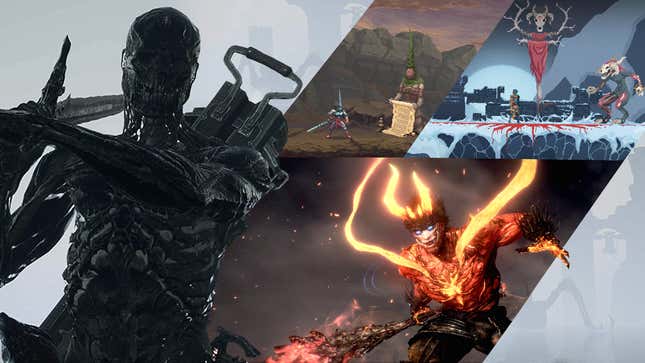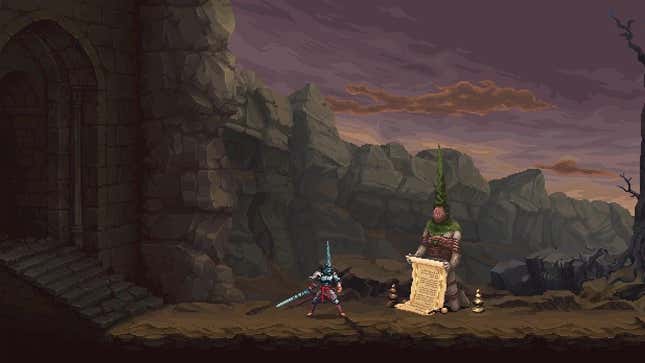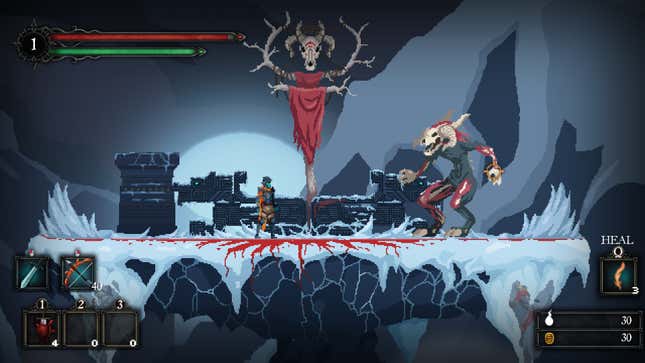
Eleven years after the release of From Software’s Dark Souls (and in the same year that the company’s Elden Ring blew all of that series’ rewardingly hostile design ideas out into a massive and enthralling open world), the DNA of the franchise has been well and truly disseminated into the gaming corpus. Everywhere you look in the hobby, there are hints of Souls, whether it’s in an embrace of the series’ signature slower-paced combat, a straight-up copy of its beloved risk/reward mechanics—or just a willingness to cheerfully kick players straight in the teeth from time to time.
Nowhere, though, is Souls’ dominance clearer than in the ultimate hallmark of a new type of gaming arriving on the scene: An awkward, dopey bit of nomenclature that warps the name of a dominant title in the genre into an adjective form. And while the From-derived “Soulslike” isn’t as awkward a portmanteau as *shudder* Metroidvania, it also doesn’t tell you much about what you’re getting when imitators attempt to play in this space. After all, Dark Souls and its ilk are really, if you want to get pedantic about it, just action RPGs with some particular design principles operating around combat, exploration, and storytelling. Calling a game a “Soulslike” simply suggests that some, all, or even very little of those ideas and aesthetics have been imported into the new material.
Even so: An increasingly crowded pack. Which is why we’re offering up this little primer, exploring those games that best live up to Dark Souls’ legacy (without actually, y’know, being made by the people who made Dark Souls; hopefully nobody needs to tell you to go play Bloodborne). We’re sticking to a fairly tight, if still arbitrary, definition of “Soulslike” here—excluding, for instance, Team Cherry’s masterful Hollow Knight, on the grounds that it doesn’t play much like Dark Souls, for all that it captures a similar sense of a dying world—and instead focusing on four games that attempt to match the masters on their own turf. And because none of these imitators are going to hit every metric, we’ve divided our picks up by which aspects of the Souls formula each game best serves, and added a few “What to play next” entries if you find yourself still looking for a deeper dive.



